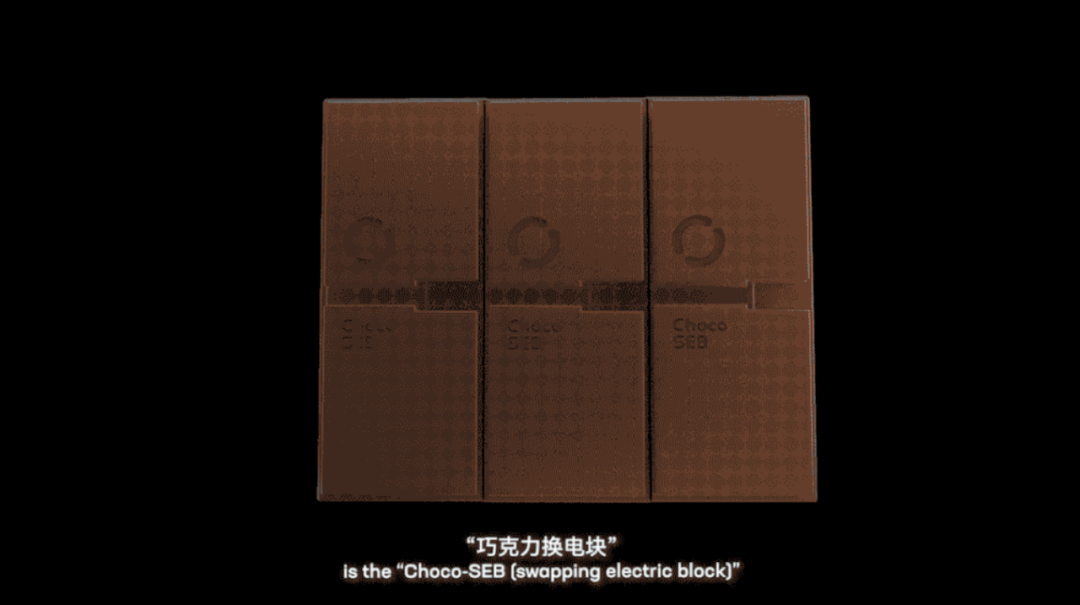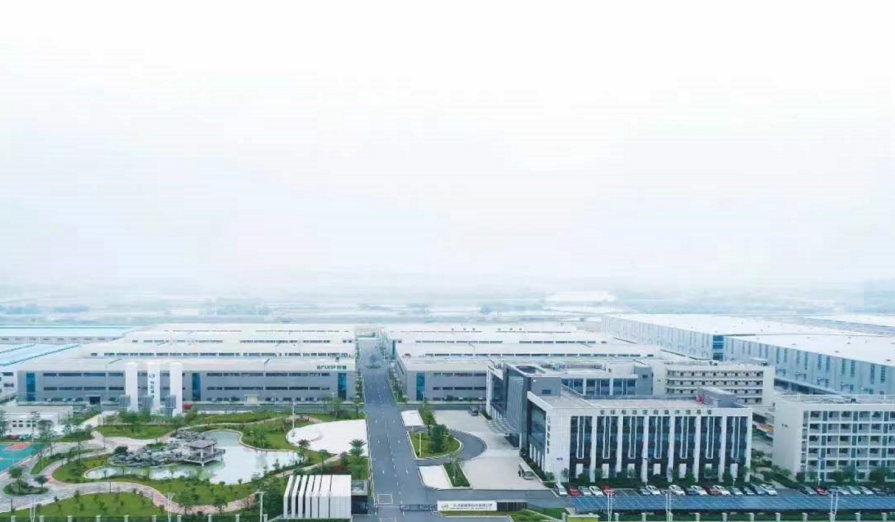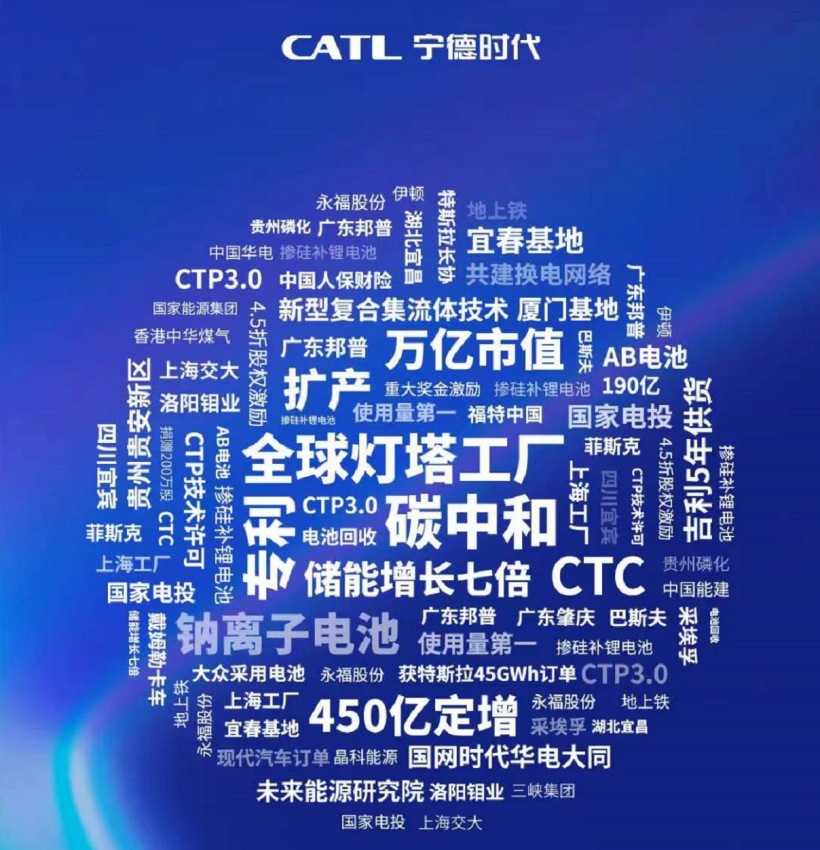*This article is reproduced from autocarweekly WeChat Official Account
Author: Karakush
Life is like a box of chocolates, you never know what you’re going to get.
Such as in 2022, the one you pick up may be a piece of NIO from NIO Inc.

Two days ago, NIO launched its own battery swapping service brand EVOGO, providing an integrated battery swapping solution breaking through brand boundaries, including battery swapping blocks, battery swapping stations, and online APPs for private cars and logistics vehicles.
One of its key products is the “chocolate battery swapping block”, a highly energetic small battery block developed specifically for “shared battery swapping” that can be mass produced. Each block can be swapped in just 60 seconds and can provide a range extension of 200 km~600 km (corresponding to 1~3 battery blocks). It offers an unobtrusive refueling experience, allowing electric vehicles to quickly recharge just like gasoline vehicles, getting in with an old man leaning on the wall and coming out as a sprightly young man without worrying about the range anxiety.

At present, the market and the industry have basically reached a consensus: the convenience of refueling is the key indicator of electric vehicle “range anxiety”. As the main charging mode still faces technological and operational bottlenecks, battery swapping has always been on everyone’s mind as a supplement.
It is not a new thing. The world’s first group of companies that switched to battery swapping has gone bankrupt ten years ago. In recent years, it has become more like an empty bottle with a label attached, with people enthusiastic about the robust curative effect on the package. However, the industry has never been able to fill it up.
Now NIO’s move is like a sweet punch, telling us that battery swapping will finally become a profitable business.
The threshold of business
Previously, battery swapping was an unsustainable fake track. The investment in battery swapping stations was too high and the number of battery swapping vehicles was too small, leading to profitability issues, and companies were not active.
But the most fundamental issue was the lack of a unified standard. Battery swapping also follows the basic law of economies of scale, where standardization is a prerequisite for large scale production, including standardized requirements for the entire vehicle, connection parts, and especially batteries.
The battery pack matrix corresponding to different vehicle manufacturers, or even different models of the same vehicle manufacturer, is extremely complex. According to statistics from BatteryChina.com, in 2020, China had nearly 280 types of installed battery cell unit models, corresponding to over 300 different dimensions of cell units, with the largest size accounting for only 10.6% of the total installed amount.
This uncontrollable diversity can be managed within the vehicle manufacturers through platformization, but it is obviously more difficult for vehicle manufacturers to be compatible with each other.Therefore, current battery swapping systems are all built within a closed system of either a single automaker, such as NIO, or a single scenario, such as taxi. There are currently 30 companies and 59 battery swapping products on the market, almost all of which are operating independently.
Battery swapping stations cannot become universal equipment either. For capital, because they are not universal, the cost cannot be shared by the entire industry, and it cannot form a scale. The cars that can be adapted are limited, and the operating efficiency is consistently low, lacking the strategic significance of long-term investment.
For consumers, due to the lack of universality, the number of usable sites is limited, and it is not convenient enough. Furthermore, they will not have a good experience or trust in battery swapping, thereby making it difficult for the market to accept it, making real promotion difficult.
Just like if every car brand built its own gas stations, BMW would not be able to refuel at Mercedes-Benz stations, and gas refueling would not be as convenient as it is today. It is better to have unified management.
Therefore, battery swapping must break through the protocol barriers between different brands, from operating cars to operating both public and private cars, allowing consumers to use it first, using part of the market to force more players to join, further improving efficiency and input-output ratio, making it a business.
Looking at the endgame, this is certainly not the work of one or two companies. It is just that at this moment, we need to uncover the grand opening, how to uncover it and who will do it, all pointing to CATL.
Only CATL can make a move?
CATL’s Chocolate battery swapping block first provides a standardized product.
It can be adapted from A00, B, and C-class passenger cars to logistics vehicles, covering 80% of electric platforms that have been put on the market, as well as those that will be developed for the next 3 years.
Any vehicle equipped with “Chocolate Battery Swapping Block,” regardless of brand, whether it is First Auto Works or Dongfeng, Great Wall or Geely, can be adapted to the EVOGO fast swapping station to swap batteries.
Opening up brands also opens up demands. Supporting a free combination of 1 to 3 blocks, you can choose one, two, or three battery blocks, with a single-block endurance of 200 km, and a maximum endurance of 600 km when all three blocks are fully loaded.
Other companies can also introduce their own standardized battery swapping blocks. Technologically, the chocolate block is based on CATL’s wireless BMS technology, but other solutions can also exist.
What is irreplaceable is that it is promoted by CATL itself as a domestic battery giant.One of the advantages of NINGDE era is its high degree of concentration in the industry. Despite the fact that battery suppliers are very diverse from the perspective of car manufacturers, they are highly concentrated from the perspective of battery suppliers. Currently, the domestic pattern is “one super power, several strong players”, and NINGDE era’s super advantage is overwhelming. According to its Q3 financial report last year, its domestic installation capacity market share has reached 53%.
Most well-known new energy car companies purchase batteries from NINGDE era. Many large customers have locked in their requirements as early as 2022 or even further, for example, Tesla’s supply agreement has been extended to 2025. Domestic enterprises have also deepened their ties with NINGDE era through various means in order to lock in production capacity. For example, SAIC, FAW, Geely, and GAC have respectively established joint ventures with NINGDE era.
Being highly sought after for full production and sales is an embodiment of its bargaining power as an upstream supplier. Its breadth and depth of industry coverage make NINGDE era likely to leverage its market position to form standardization in developing vehicle models together with all other car companies.
There are no other contenders besides NINGDE era. Any car company lacks the position to integrate battery designs from other brands, while other battery companies lack equivalent appeal and bargaining chips. Generally, car companies update their models every three to five years. If battery design is arbitrarily changed, it will not stay compatible with the changing of the battery exchange equipment and battery blocks. Therefore, only stable leaders like NINGDE era can promote standardization.
Secondly, there is comprehensive technical capability.
Within the battery exchange ecosystem, power batteries are the core assets. The longer the cycle life of a battery, the better the battery asset, which is also an important indicator for a viable business model. NINGDE era has significantly improved the service life of batteries and performance parameters five years after design, and has even developed a 16-year, 2 million kilometer passenger car battery solution. This changes the depreciation formula and therefore improves the economy models.
At the same time, the battery is also a liquidable asset, constantly consumed in a shared battery bank network. So in addition to software and hardware technology, swapping batteries also involves the operation of the battery exchange ecosystem platform, the management of city-level distributed energy storage, and the monitoring and management of the full life-cycle of batteries, etc. Compared with the vast majority of car companies, NINGDE era possesses a basic know-how to optimize battery allocation strategies and transfer efficiency, which directly determines user experience.
There is another technical advantage, which lies in a deep exploration of the full life-cycle of batteries. Depreciation is an unavoidable cost, and aging batteries within the system need maintenance and replacement, which incurs a large loss over time. Battery companies can uplift the earning probability of residual value through business models such as step-by-step utilization and recycling, which fully utilizes batteries economically and reduces the demand for mineral resources from the system. For example, NINGDE era can rely on its subsidiary, Guangdong Bangpu, to build an ecological loop from battery production and utilization to step-by-step utilization, recovery, and resource regeneration.
Thirdly, it is the strong financial capability. The large-scale construction and operation of battery swapping stations are hardcore heavy assets, and besides equipment, there are also costs such as electricity prices, land prices, depreciation, and operation and maintenance.
The report from China Everbright Securities last year pointed out that under the premise of vehicle matching, the utilization rate of a single battery swapping station needs to reach 60% to 70% to achieve breakeven. However, the average utilization rate of battery swapping stations in first-tier cities such as Beijing is around 20% (as of the end of 2020).
The core of profitability lies in high frequency, having to standardize and accept all vehicle types, and forming a more efficient ratio of stations-which requires a large amount of capital to cover the initial investment, in order to revitalize the entire mode of continuous development.
As a trillion-dollar listed company, Contemporary Amperex Technology Co. Limited (CATL) has a financing ability ceiling in the new energy industry chain.
At the same time, as a high-quality industry, it has a solid fundamental, with a single-quarter revenue of 29.29 billion yuan, a gross profit margin of 27.9%, a net profit attributable to shareholders of 3.27 billion yuan in Q3 of last year. Benefitting from its rigorous financial style, its own cash flow is always very abundant, with a cash and cash equivalents balance of more than 70 billion yuan at the end of the period, and has independent capital to bear risk.
Of course, the capital capacity of companies lies more in the amount that can be leveraged. It takes efforts to mobilize banks, government agencies, state-owned energy systems, and other forces, to combine resources and jointly undertake heavy investments.
For example, Contemporary Amperex Technology has strategic cooperation agreements with the governments of provinces such as Guangdong, Sichuan, Jiangxi, and Guizhou, and has in-depth cooperation and exchanges with the governments of Jiangsu and Shanxi. At the same time, it has strategic cooperation relationships with old energy groups such as China Huadian Corporation Ltd., China Three Gorges Corporation, State Energy Investment Corporation Ltd., China Energy Construction Co. Limited, and State Power Investment Corporation.
These circles of friends are the travel documents for expansion.

Returning to the Value of Existence
Contemporary Amperex Technology did not drop from the sky. They have been actively deploying since 2019. By the end of last year, signing a cooperation agreement with the Guizhou Provincial Government to build a battery swapping network marked their formal entry.
Currently, the national policy is strongly encouraging and actively subsidizing. And with regard to the critical standardization issues, a series of organizations are already organizing standards, and CATL is also one of the companies participating deeply in standard-setting.
But healthy growth still needs to be led by the market and cannot wait passively for policies to solve everything. With the emergence of giants such as Contemporary Amperex Technology entering the market, the problem of low expectations of the past is being resolved, coupled with the backing of the big background.According to a research report by Orient Securities, it is expected that the sales of new energy vehicles in China will reach 7.8 million units in 2025, of which the proportion of battery-swapping models is expected to reach 30%. Based on this estimation, it is predicted that there will be 22,000 battery-swapping stations in China in 2025, with a market size of 263.1 billion yuan for operation and 69.3 billion yuan for equipment.
However, some people still worry that battery-swapping is just a fleeting trend. With the advent of high-voltage ultra-fast charging, battery-swapping will lose its market foothold. We need to understand that diverse, long-term coexistence and complementary, gradual progress are almost the solutions to all problems in the Chinese market.
More importantly, supplementing energy is just a small step for battery-swapping, and its ultimate significance lies in it being a mechanism for optimizing social resource allocation in the long run.
As far as private cars are concerned, they are equipped with batteries with increasingly longer cruising ranges, but only use 10-20% of the battery power in their daily lives, resulting in a lot of wastage of resources. However, users still need to pay a large amount of sunk costs to purchase high-capacity vehicles to alleviate range anxiety and energy replenishment anxiety.
Even for frequent drivers, it is impossible to avoid idle of the battery calendar life and cycle times. A private car uses only one cycle of the battery, and it is impossible to drive eight or nine hundred thousand kilometers. Even if a car is driven for 10 years, only 1/10 of the battery is used, and 90% of its life is wasted, and the redundant charge and discharge cycles are also wasted.
From the perspective of optimal efficiency, it is more advantageous to treat the battery as a social resource rather than private property.
For consumers, shifting the sunk and depreciation costs of battery purchase outwards, they only need to bear the service fee, which is more economical. Especially with brand connectivity and upgrading of scale, the relative advantages of battery-swapping will gradually emerge, covering the suspicion of vehicle-electricity separation with efficient energy replenishment to eliminate range anxiety, and electric vehicles can expand their usage boundaries and develop tension from a relatively narrow scene. The development tension of an industry ultimately leads to the convenience and favorability level of consumers.
From a social perspective, sharing the battery-swapping network can greatly improve the utilization rate of individual batteries compared to being held in one car. At the same time, charging and discharging can also be used for distributed energy storage, smoothing the increasingly tight power grid security. As the number of new energy vehicles increases, battery-swapping will have even greater value.
Full-link integration from the vehicle end to the energy storage end will be the direction of battery-swapping, and it is also the real layout of Ningde Times for future growth. They want to move from being a supplier of automotive power batteries to become an energy giant that constructs a new energy network system with energy storage units and energy access to the grid.Looking back, both the market and the country are extremely tolerant and allowing Chinese companies to make their own choices for the future. In the past, unwavering determination has brought CATL to where it is today; believing in constantly honing its focus on the needs of users, CATL will continue to forge itself as a heavyweight enterprise that is difficult to defeat for the nation.
This article is a translation by ChatGPT of a Chinese report from 42HOW. If you have any questions about it, please email bd@42how.com.
